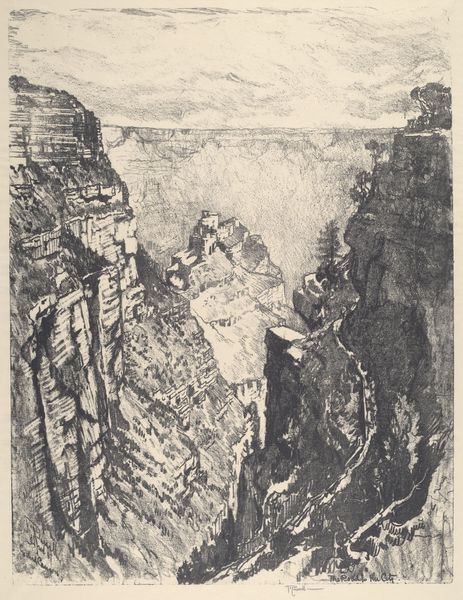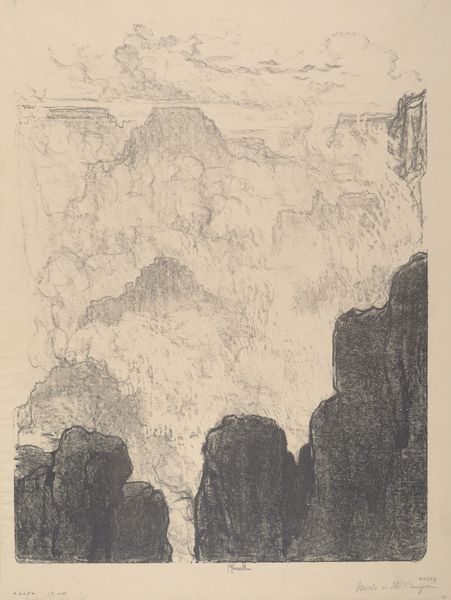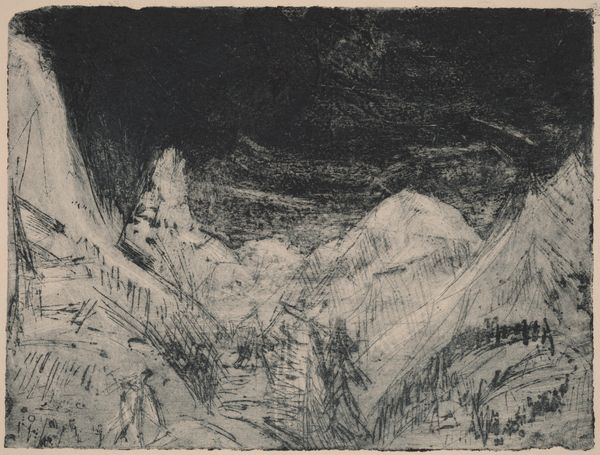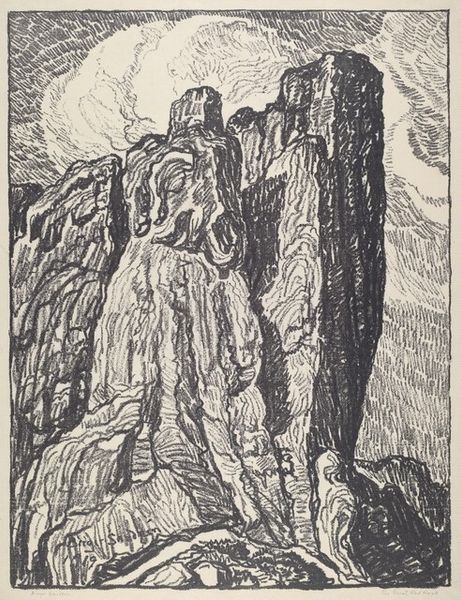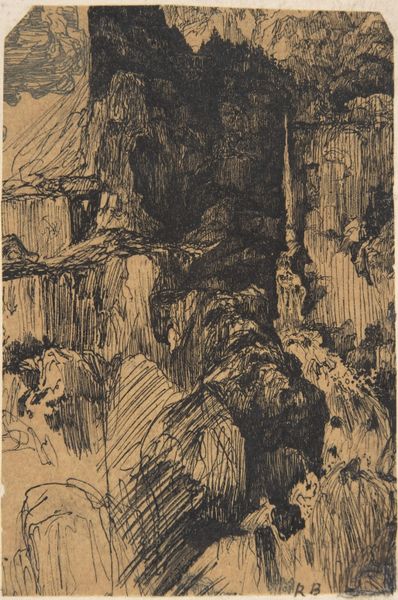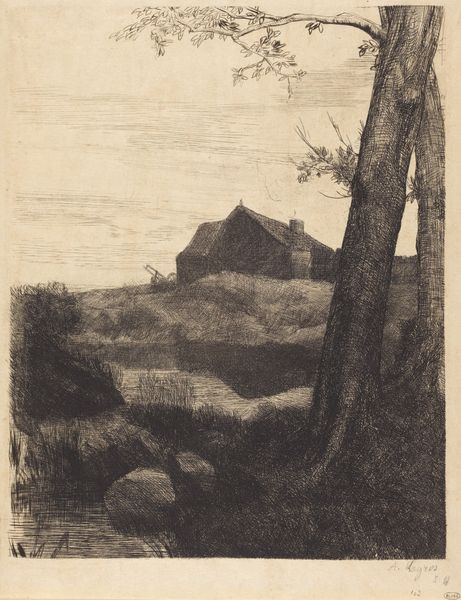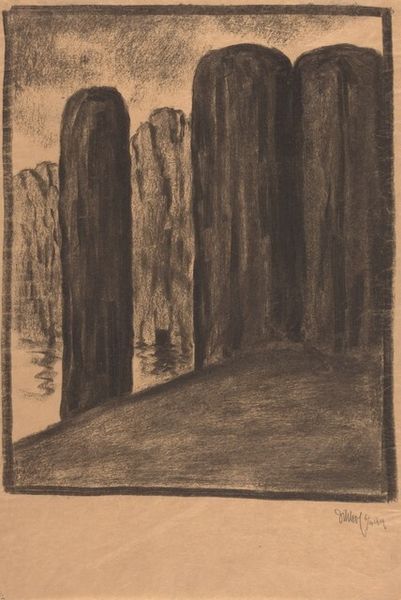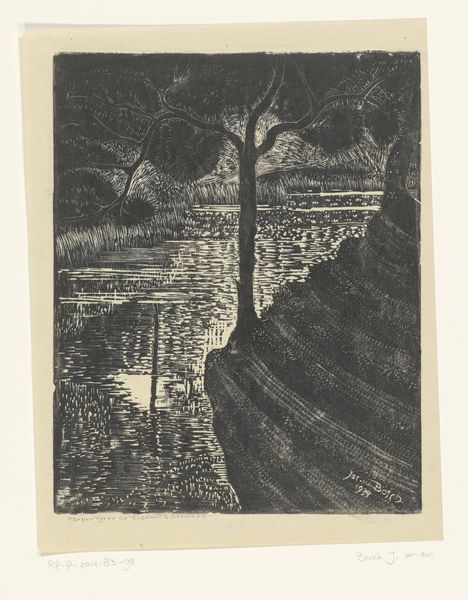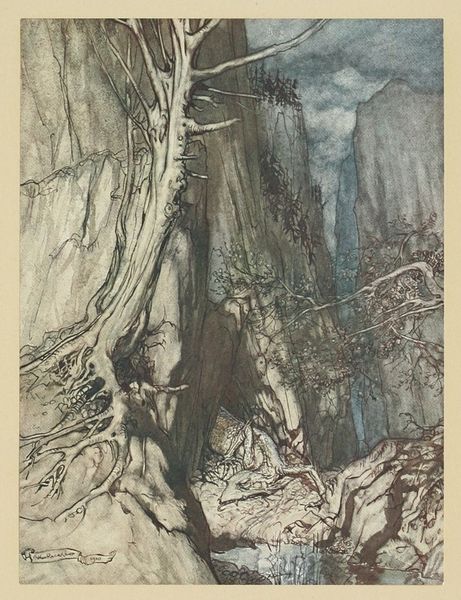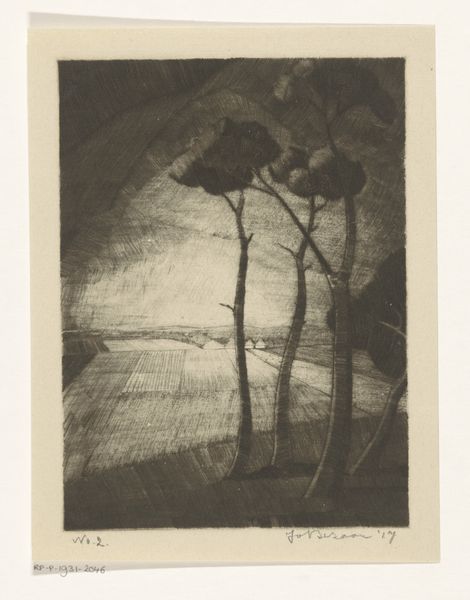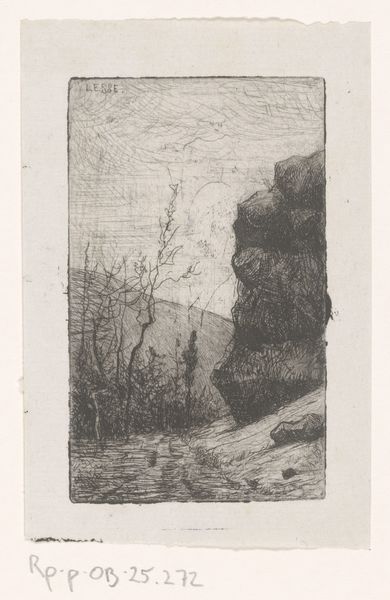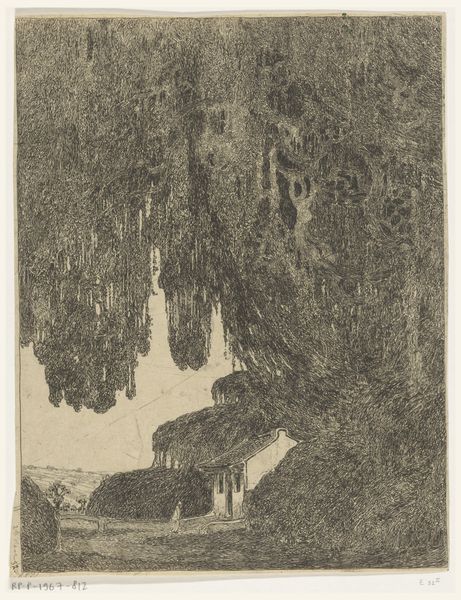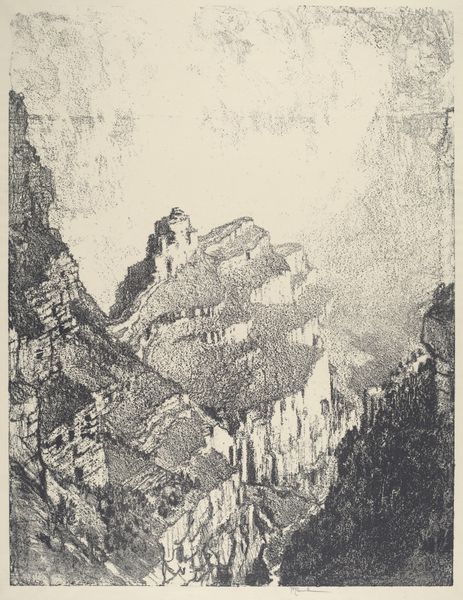
print, graphite
# print
#
landscape
#
pencil drawing
#
graphite
#
realism
Copyright: National Gallery of Art: CC0 1.0
Curator: Joseph Pennell’s 1912 print, "Night in the Yosemite," composed of graphite on paper, arrests the gaze with its somber yet awe-inspiring landscape. Editor: Yes, there's an almost oppressive feel to it, a visual weight in the mountains that speaks to both the majesty and potential alienation of nature. The dark rendering has a cloaking effect. Curator: Absolutely, the composition's stark contrast certainly enhances that effect. Think of how night traditionally symbolizes the unknown, even fear, across various cultures. Here, the looming mountains amplify that, presenting Yosemite not just as a place but as an encounter with primal forces. Editor: I think it goes deeper, it raises complex issues when viewing Pennell’s work within its socio-historical context. It highlights the mythologizing of the American landscape as inherently free, ignoring the historical displacement of Indigenous peoples. Pennell renders Yosemite as seemingly untouched, which actively erases Indigenous presences. Curator: A valid point, considering the era’s expansionist drives. But also think of the enduring allure of landscape art. Doesn't the darkness, and the light struggling to pierce through, become a visual metaphor for resilience and perseverance, themes so profoundly etched in cultural memory? Editor: It can be read that way, but let’s not ignore how romanticizing nature often obscures the exploitation and environmental damage done in the name of progress, themes echoed in art and photography of that period. This image seems part of that ongoing narrative. Curator: I agree with your reading; and, at the very least, the piece stands as a poignant meditation on our relationship with nature. Its darkness isn't just an aesthetic choice, but perhaps a mirror reflecting humanity's complex, often conflicting, emotions when facing the sublime. Editor: Agreed, it encourages us to contemplate our positionality—who are we within that landscape, historically, culturally, and environmentally?
Comments
No comments
Be the first to comment and join the conversation on the ultimate creative platform.

